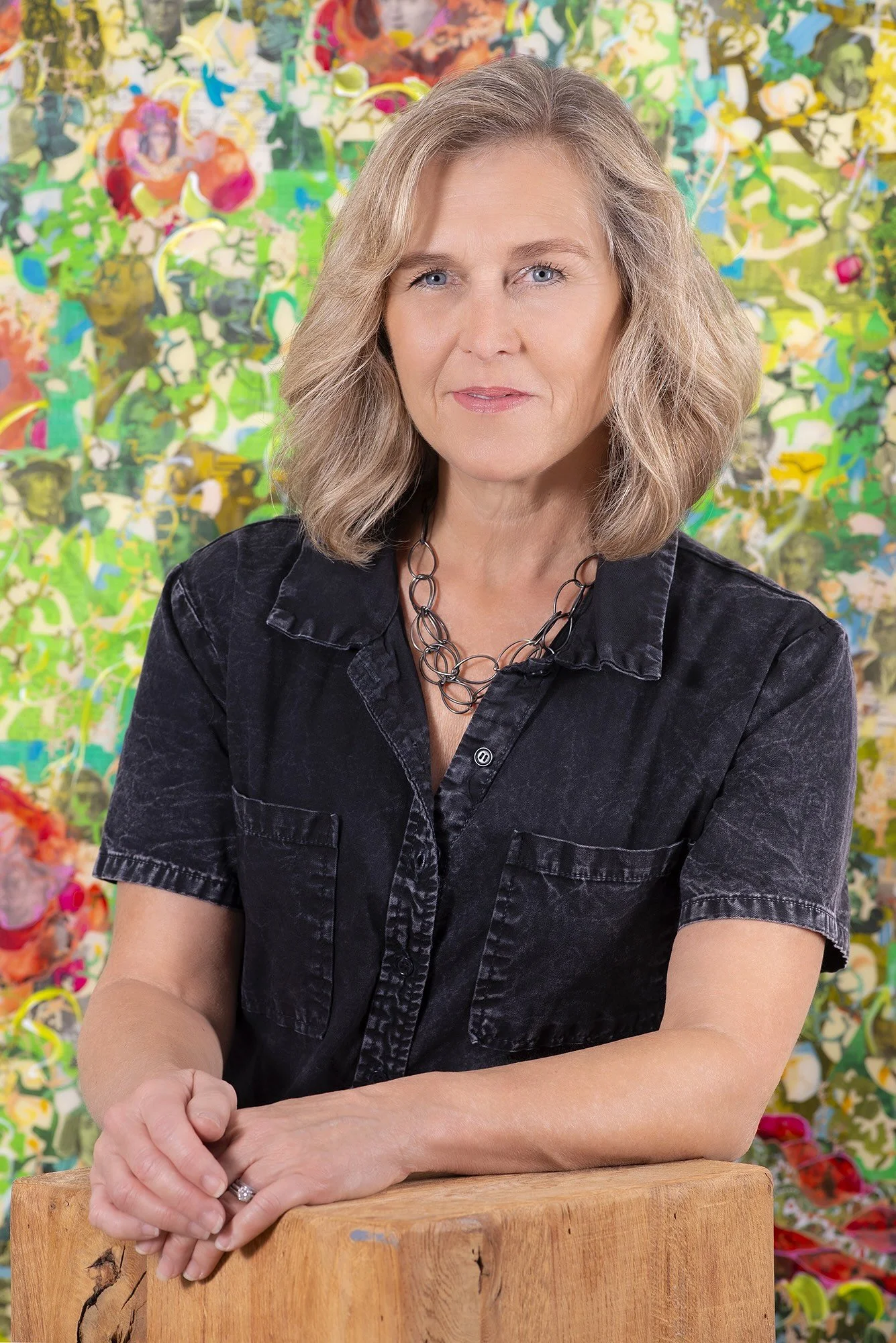Textile Inspired
Abstract Narratives
Revisiting the past is like scraping paint off an aging wall: scrape back one layer, another is revealed, on and on, until the layers organically meld into one.
For mixed media artist Kristy Darnell Battani, the act of creating art from vintage texts, diaries, ledgers and manuals is an opportunity to recreate that aging process by weaving ideas and images of the past into layered, abstract paintings and forms.
With only bits of the original source material unobscured, Battani’s work pulls the viewer into her abstract narratives, immersing the viewer in intertwined shapes, patterns and color.
Through the years, Battani’s work has evolved from the occasional use of print materials for texture to being fully created of the source materials, finding inspiration in artists like Mark Bradford. “The materials that most interest me are so mundane that most people rarely keep them, let alone consider them worthy of including in fine art,” shares Battani. “They are the materials we have used for guidance, record-keeping, notes and ideas. The very best ones are dog-eared, highlighted or filled with personal notations, in other words, they reflect the humanness of a prior life.”
These days Battani is keen to use old manuals. “I love old manuals: I appreciate their awkward diagrams, illustrations and our feeble human attempts to educate one another. Manuals highlight our insecurities, our aspirations, and our incessant search for acceptance. However, by defining the way to do something, manuals almost inherently reinforce stereotypes.”
Battani begins each piece by deconstructing a single source material so that she no longer sees it in the form it was originally presented. “I look for repeating forms, images, colors and ideas that will form the basis of the artwork,” explains Battani. “As I start to build the layers of the artwork the process is less an act of collage as a re-weaving of the original source material in a form that allows the viewer to interact with the ideas contained in those materials in a new way. I am always looking for the hidden stories lurking beneath printed words and images, the quiet messaging that has shaped our past and continues to influence our current beliefs.”
Battani thinks of her process as similar to constructing a tapestry so she often look to textiles and fiber arts for ideas for mark making and structure for the forms she creates. Viewers are often initially drawn to Battani’s work by the bold colors, patterns and movement, but upon closer inspection they are pulled into a world of tiny details, one bleeding into the next, creating a fantastical narrative from the bits of the original source material that remain visible.
“No matter how complex a work may be, every mark, every color, every shape requires a reason to be included.”
Some of Battani’s works take on a three-dimensional textile element, works that are woven or sculpted from the enigmatic source materials she collects. Hand-formed dimensional paper pieces are still one of Battani’s most requested works, with commissioned pieces featured in numerous public spaces such as the upscale Crown Block restaurant rotating atop the iconic Reunion Tower in Dallas and Austin Energy’s corporate offices. “Commission projects for corporate and hospitality clients have become a staple of my practice. I hunt for materials that are relevant to the client and create artwork that helps them tell their story, be it oil industry manuals, sheet music or company publications.”
These days Battani is using her same technique to create a series of large scale abstract portraits of “Leading Ladies,” women who were leaders in their fields but are relatively unknown. “I am astounded by the volume of absolutely brilliant women who have been ignored in our history books. Society typically fixates on women’s physical appearance; in contrast, the key concern of these works for me is building them from thought-provoking source materials that reflect the contributions these women made to their respective fields.”
Like many artists, Battani’s art career has a back story.
After studying art and design as an undergraduate, Battani admits she was unclear how to make a living as an artist, so she made the somewhat unconventional choice to begin her professional life as an intellectual property lawyer. “The law consumed all of my time and a fair bit of my soul, but it brought some talented, committed people into my life and gave me a lens to investigate the world,” reflects Battani. Ultimately, Battani revisited her art practice, slowly allowing it to develop and eventually replace her legal career. “Art just gives me more tools to express what I see through that lens.”
Battani resides in Austin, Texas and works with collectors and art professionals around the country.
Along the way, Battani learned that virtually every artist has a back story and a set of experiences that has enabled the creation of their artwork. She loves discovering those stories and shares them in a podcast called the ARTish Plunge. Take a listen.

